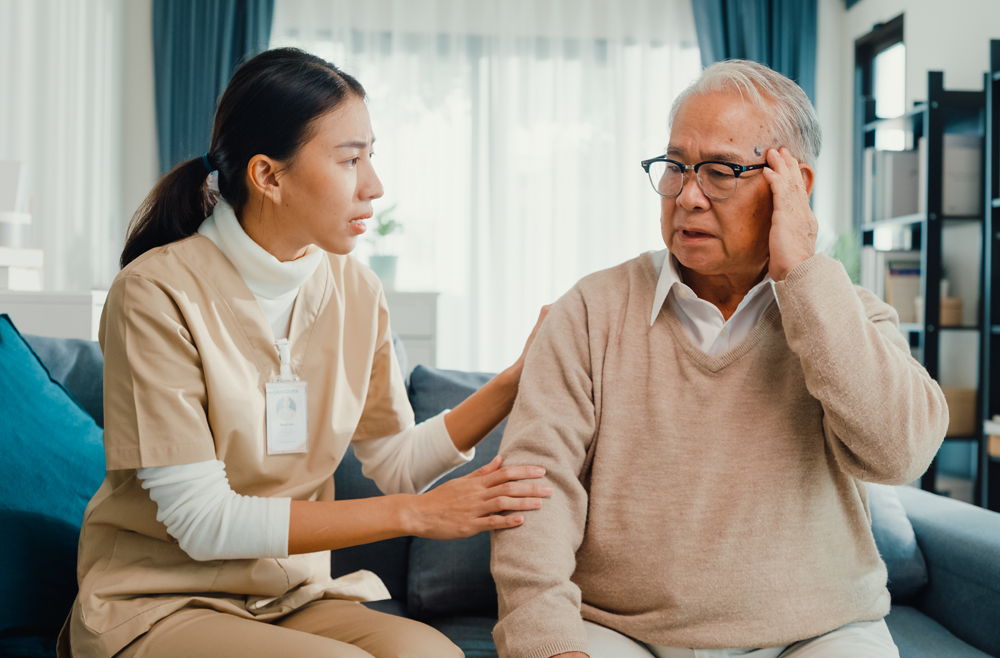Introduction
Dementia is a progressive condition that affects memory, thinking, and behavior. As the disease advances, individuals may experience confusion, disorientation, and difficulty performing daily tasks. Living at home can offer comfort and familiarity, but it also poses potential risks for those with dementia. Creating a safe home environment is essential to protect the individual’s physical well-being, reduce anxiety, and help them maintain a sense of independence for as long as possible. This article explores practical strategies to make the home safer, more navigable, and more supportive for dementia patients.
1. Understanding the Challenges of Dementia
Before making changes to the home, it is important to understand the specific challenges faced by dementia patients:
- Memory Loss: They may forget where items are placed or how to use everyday objects.
- Disorientation: They can become confused about time, place, or their surroundings.
- Poor Judgment: They might engage in unsafe behaviors, such as leaving the stove on or wandering outside at night.
- Reduced Coordination: Physical movement and balance can be impaired, increasing the risk of falls.
Recognizing these challenges allows caregivers to adapt the home environment accordingly.
2. General Safety Measures
A dementia-friendly home should prioritize safety while avoiding unnecessary restrictions that cause frustration. Some key measures include:
- Remove Hazards: Keep floors clear of clutter, secure loose rugs, and ensure electrical cords are out of the way.
- Improve Lighting: Use bright, even lighting throughout the home to reduce shadows and prevent confusion, especially at night.
- Install Handrails and Grab Bars: Place them in hallways, bathrooms, and near stairs.
- Lock Hazardous Items: Keep cleaning supplies, medications, and sharp objects in locked cabinets.
- Emergency Preparedness: Have smoke detectors, carbon monoxide detectors, and an easy-to-access emergency contact list.
3. Room-by-Room Safety Adjustments
Living Room
- Use stable, sturdy furniture to prevent tipping.
- Avoid glass-topped tables or sharp-edged furniture.
- Arrange furniture to allow clear walking paths.
Kitchen
- Install stove safety knobs or automatic shut-off devices.
- Store knives, scissors, and appliances in locked drawers.
- Label drawers and cabinets for easier navigation.
Bedroom
- Place the bed in a location that allows easy access from both sides.
- Keep essential items like a lamp, glasses, and water within reach.
- Consider using a nightlight to prevent confusion during nighttime wake-ups.
Bathroom
- Install non-slip mats inside and outside the shower.
- Use a shower chair and handheld showerhead for safer bathing.
- Mark hot and cold taps clearly to prevent burns.
Outdoor Areas
- Ensure pathways are smooth and well-lit.
- Lock gates and install fencing to prevent wandering.
- Remove garden tools and hazardous chemicals.
4. Reducing Confusion and Anxiety
In addition to physical safety, emotional comfort is equally important.
- Use Contrasting Colors: This helps patients distinguish objects, such as the edge of a chair or a bathroom door.
- Clear Signage: Labels or pictures on doors can guide them to the right rooms.
- Routine and Familiarity: Keep furniture and household items in consistent places to maintain familiarity.
- Reduce Noise: Minimize loud background noises, which can cause stress.
5. Technology for Safety
Modern devices can assist caregivers in monitoring and protecting dementia patients:
- GPS Tracking Devices: For patients prone to wandering.
- Door and Motion Sensors: Alerts caregivers if a patient leaves the home or enters unsafe areas.
- Medical Alert Systems: Allow the patient to call for help quickly.
- Video Monitoring: For remote supervision while respecting privacy.
6. Involving the Patient in Safety Measures
While the main goal is safety, it is important to involve the patient in the process when possible. Giving them choices—such as selecting colors for labels or deciding where frequently used items should be kept—can help them feel valued and respected.
Conclusion
Creating a safe home environment for dementia patients requires a thoughtful combination of physical safety measures, emotional support, and adaptive technology. Every home and every individual is different, so safety plans should be personalized to meet specific needs. By removing hazards, improving navigation, and providing comfort, caregivers can significantly enhance the patient’s quality of life and reduce stress for everyone involved. A dementia-friendly home is not just safer—it is a space that fosters dignity, independence, and peace of mind.
FAQs
How can I prevent a dementia patient from wandering at night?
Install door alarms, use motion-sensor lights, and keep doors locked. Creating a calming bedtime routine can also help reduce restlessness.
Should I use locks on every cabinet?
Only lock cabinets containing hazardous items, such as cleaning chemicals, sharp tools, and medications. Leave safe items accessible to promote independence.
What colors work best in a dementia-friendly home?
High-contrast colors help patients distinguish between objects and surfaces, while calming colors like soft blues and greens can reduce anxiety.
Is it safe to leave a dementia patient home alone?
In early stages, short periods may be safe with precautions in place. However, as the disease progresses, constant supervision becomes necessary.
Can technology replace a caregiver?
No. Technology can assist with monitoring and safety, but human interaction and care remain essential for emotional and physical well-being.






